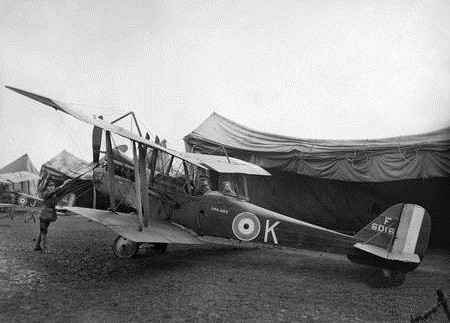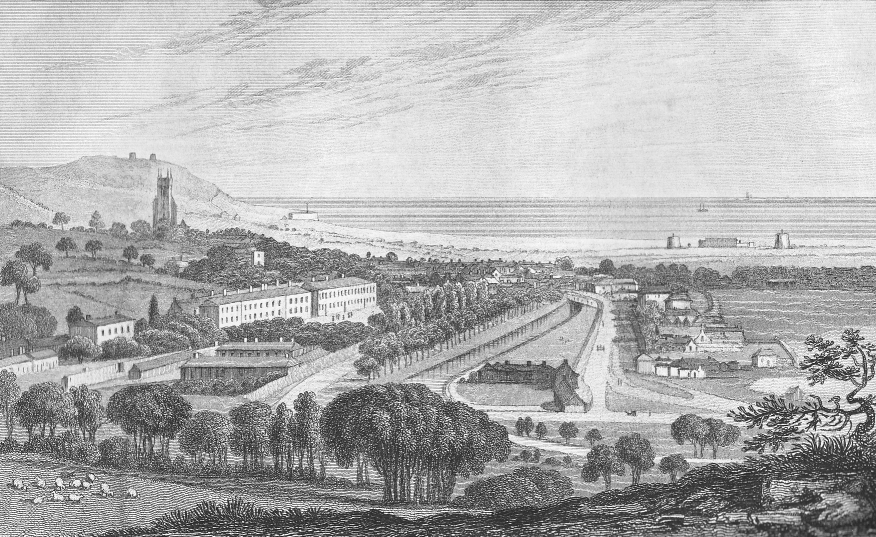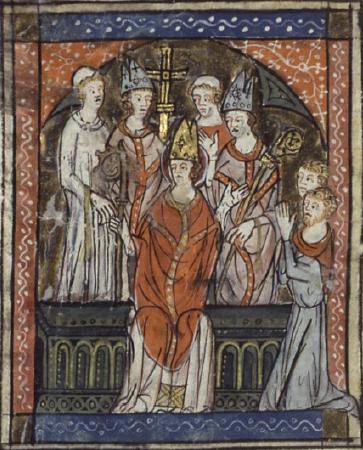|
Thomas Barkell
Lieutenant Thomas Henry Barkell (born 1892, date of death unknown) was an Australian flying ace of the First World War, credited with seven aerial victories. Military service No. 3 Squadron AFC Barkell worked as a motor mechanic in Sydney before enlisting into the Australian Flying Corps on 16 October 1916. He was posted to "B" Flight, No. 2 Squadron, (later renumbered No. 3 Squadron) as a private, but was regraded as an air mechanic 2nd class when the squadron arrived in England on 29 December aboard HMAT A38 ''Ulysses''. His squadron was based at South Carlton, Lincolnshire, engaged in flying training with Avro 504 and B.E.2e two-seater aircraft. In February 1917 flying duty was opened to the rank and file; six positions for aerial gunners ranked as NCO observers were offered, and over 100 applications (more than half the squadron's other ranks) were received. Six men were eventually selected, of whom Barkell was one. He was promoted to sergeant and posted to the No. 1 S ... [...More Info...] [...Related Items...] OR: [Wikipedia] [Google] [Baidu] |
Randwick, New South Wales
Randwick is a suburb of Sydney, in the state of New South Wales, Australia. Randwick is located 6 kilometres south-east of the Sydney central business district and is the administrative centre for the local government area of the City of Randwick. Randwick is part of the Eastern Suburbs region. The postcode is 2031. History Randwick was named after the village of Randwick, Gloucestershire, England, birthplace of Simeon Henry Pearce, who became Mayor of Randwick six times. Simeon, who migrated to Australia in 1842, and his brother James who arrived in 1848, were responsible for the founding and early development of Randwick. Simeon built the first stone house in the area in 1848, called Blenheim House, which can still be seen in Blenheim Street. It was neglected for some time in the mid-1900s, but was eventually acquired by Randwick City Council and restored. Proclaimed as a Municipality in February 1859, and as a City in 1990, Randwick has a rich history and a number of h ... [...More Info...] [...Related Items...] OR: [Wikipedia] [Google] [Baidu] |
Hythe, Kent
Hythe () is a coastal market town on the edge of Romney Marsh, in the district of Folkestone and Hythe on the south coast of Kent. The word ''Hythe'' or ''Hithe'' is an Old English word meaning haven or landing place. History The town has mediaeval and Georgian buildings, as well as a Saxon/ Norman church on the hill and a Victorian seafront promenade. Hythe was once defended by two castles, Saltwood and Lympne. Hythe Town Hall, a neoclassical style building, was completed in 1794. Hythe's market once took place in Market Square (now Red Lion Square) close to where there is now a farmers' market every second and fourth Saturday of the month. Hythe has gardening, horse riding, bowling, tennis, cricket, football, squash and sailing clubs. Lord Deedes was once patron of Hythe Civic Society. As an important Cinque Port Hythe once possessed a bustling harbour which, over the course of 300 years, has now disappeared due to silting. Hythe was the central Cinque Port, sitti ... [...More Info...] [...Related Items...] OR: [Wikipedia] [Google] [Baidu] |
Insall A J Collection; Sopwith F
People with the surname Insall include: * Donald Insall (born 1926), British architect, conservationist and author * Gilbert Stuart Martin Insall (1894–1972), British pilot in the Royal Flying Corps and Royal Air Force * John Insall (1930–2000), pioneering English orthopaedic surgeon who spent most of his career in the United States * Robert Insall Robert Insall is a Professor of Mathematical and Computational Cell Biology at the University of Glasgow and a Senior Group Leader at the Beatson Institute for Cancer Research. His work focuses on how eukaryotic cells move, and how they choose t ... (born 1965), British cell & computational biologist {{surname ... [...More Info...] [...Related Items...] OR: [Wikipedia] [Google] [Baidu] |
Flight International
''Flight International'' is a monthly magazine focused on aerospace. Published in the United Kingdom and founded in 1909 as "A Journal devoted to the Interests, Practice, and Progress of Aerial Locomotion and Transport", it is the world's oldest continuously published aviation news magazine. ''Flight International'' is published by DVV Media Group. Competitors include Jane's Information Group and '' Aviation Week''. Former editors of, and contributors include H. F. King, Bill Gunston, John W. R. Taylor and David Learmount. History The founder and first editor of ''Flight'' was Stanley Spooner. He was also the creator and editor of ''The Automotor Journal'', originally titled ''The Automotor Journal and Horseless Vehicle''.Guide To British Industrial History: Biographies: ' ... [...More Info...] [...Related Items...] OR: [Wikipedia] [Google] [Baidu] |
Australian Corps
The Australian Corps was a World War I army corps that contained all five Australian infantry divisions serving on the Western Front. It was the largest corps fielded by the British Empire in France. At its peak the Australian Corps numbered 109,881 men. By 1918 the headquarters consisted of more than 300 personnel of all ranks, including senior staff officers, as well as supporting personnel such as clerks, drivers and batmen. Formed on 1 November 1917, the corps replaced I Anzac Corps while II Anzac Corps, which contained the New Zealand Division, became the British XXII Corps on 31 December.Becke, p. 258. While its structure varied, Australian Corps usually included 4–5 infantry divisions, corps artillery and heavy artillery, a corps flying squadron and captive balloon sections, anti-aircraft batteries, corps engineers, corps mounted troops (light horse and cyclists), ordnance workshops, medical and dental units, transport, salvage and an employment company. History ... [...More Info...] [...Related Items...] OR: [Wikipedia] [Google] [Baidu] |
Bailleul, Nord
Bailleul (; ''Belle'' in Dutch) is a commune in the Nord department in northern France. It is located in French Flanders, from the Belgian border and northwest of Lille. Population Heraldry Media Bailleul is the birthplace of French filmmaker Bruno Dumont and served as the setting for his first two feature films. This area is also a setting in the Timothy Findley book ''The Wars''. Carnival The inhabitants of Bailleul celebrate carnival with five days of processions and other festivities. The carnival has taken place since 1853, when the Philanthropic Company of Bailleul was founded. During the event, a search takes place for the needy ones of the city. The Gargantua Giant chairs the festivities, seated on his float and accompanied by his kitchen boys. At the end of Shrove Tuesday, after the final procession of around 50 floats, with local groups, brass bands and plenty of confetti, Doctor Francisco Piccolissimo tries to cure the excesses of some inhabitants in an unco ... [...More Info...] [...Related Items...] OR: [Wikipedia] [Google] [Baidu] |
Royal Aircraft Factory R
Royal may refer to: People * Royal (name), a list of people with either the surname or given name * A member of a royal family Places United States * Royal, Arkansas, an unincorporated community * Royal, Illinois, a village * Royal, Iowa, a city * Royal, Missouri, an unincorporated community * Royal, Nebraska, a village * Royal, Franklin County, North Carolina, an unincorporated area * Royal, Utah, a ghost town * Royal, West Virginia, an unincorporated community * Royal Gorge, on the Arkansas River in Colorado * Royal Township (other) Elsewhere * Mount Royal, a hill in Montreal, Canada * Royal Canal, Dublin, Ireland * Royal National Park, New South Wales, Australia Arts, entertainment, and media * ''Royal'' (Jesse Royal album), a 2021 reggae album * '' The Royal'', a British medical drama television series * ''The Royal Magazine'', a monthly British literary magazine published between 1898 and 1939 * ''Royal'' (Indian magazine), a men's lifestyle bimonthly ... [...More Info...] [...Related Items...] OR: [Wikipedia] [Google] [Baidu] |
E04320No
E, or e, is the fifth letter and the second vowel letter in the Latin alphabet, used in the modern English alphabet, the alphabets of other western European languages and others worldwide. Its name in English is ''e'' (pronounced ); plural ''ees'', ''Es'' or ''E's''. It is the most commonly used letter in many languages, including Czech, Danish, Dutch, English, French, German, Hungarian, Latin, Latvian, Norwegian, Spanish, and Swedish. History The Latin letter 'E' differs little from its source, the Greek letter epsilon, 'Ε'. This in turn comes from the Semitic letter '' hê'', which has been suggested to have started as a praying or calling human figure ('' hillul'' 'jubilation'), and was most likely based on a similar Egyptian hieroglyph that indicated a different pronunciation. In Semitic, the letter represented (and in foreign words); in Greek, ''hê'' became the letter epsilon, used to represent . The various forms of the Old Italic script and the Lati ... [...More Info...] [...Related Items...] OR: [Wikipedia] [Google] [Baidu] |
Arras
Arras ( , ; pcd, Aro; historical nl, Atrecht ) is the prefecture of the Pas-de-Calais department, which forms part of the region of Hauts-de-France; before the reorganization of 2014 it was in Nord-Pas-de-Calais. The historic centre of the Artois region, with a Baroque town square, Arras is in Northern France at the confluence of the rivers Scarpe and Crinchon. The Arras plain is on a large chalk plateau bordered on the north by the Marqueffles fault, on the southwest by the Artois and Ternois hills, and on the south by the slopes of Beaufort-Blavincourt. On the east it is connected to the Scarpe valley. Established during the Iron Age by the Gauls, the town of Arras was first known as ''Nemetocenna'', which is believed to have originated from the Celtic word '' nemeton'', meaning 'sacred space.' Saint Vedast (or St. Vaast) was the first Catholic bishop in the year 499 and tried to eliminate paganism among the Franks. By 843, Arras was seat of the County of Artois w ... [...More Info...] [...Related Items...] OR: [Wikipedia] [Google] [Baidu] |
XIII Corps (United Kingdom)
XIII Corps was a corps-sized formation of the British Army that fought on the Western Front during the First World War and was reformed for service during the Second World War, serving in the Mediterranean and Middle East throughout its service. First World War XIII Corps was formed in France on 15 November 1915 under Lieutenant-General Walter Congreve to be part of Fourth Army. It was first seriously engaged during the Battle of the Somme in 1916. On the first day on the Somme, 1 July 1916, the corps held the southern flank of the British line. The corps objective was the village of Montauban. The two assault divisions — the 18th (Eastern) and 30th Division, both New Army formations — seized all their objectives. Second World War On 1 January 1941, while the Western Desert Force was fighting the Italian Tenth Army during Operation Compass, it was redesignated "XIII Corps". It then included British 7th Armoured Division, Australian 6th Infantry Division and 4th Indi ... [...More Info...] [...Related Items...] OR: [Wikipedia] [Google] [Baidu] |
Canadian Corps
The Canadian Corps was a World War I corps formed from the Canadian Expeditionary Force in September 1915 after the arrival of the 2nd Canadian Division in France. The corps was expanded by the addition of the 3rd Canadian Division in December 1915 and the 4th Canadian Division in August 1916. The organization of a 5th Canadian Division began in February 1917 but it was still not fully formed when it was broken up in February 1918 and its men used to reinforce the other four divisions. The majority of soldiers of the Canadian Corps were British-born Canadians until near the end of the war, when the number of those of Canadian birth who had enlisted rose to 51 percent. They were mostly volunteers, as conscription was not implemented until the end of the war (''see'' Conscription Crisis of 1917). Ultimately, only 24,132 conscripts made it to France before 11 November 1918. In the later stages of the war the Canadian Corps was regarded by friend and foe alike as one of the most e ... [...More Info...] [...Related Items...] OR: [Wikipedia] [Google] [Baidu] |
Savy, Aisne
Savy () is a commune in the Aisne department in Hauts-de-France, located in northern France. Population See also * Communes of the Aisne department The following is a list of the 799 communes in the French department of Aisne. The communes cooperate in the following intercommunalities (as of 2020):Communes of Aisne Aisne communes articles needing translation from French Wikipedia {{SaintQuentin-geo-stub ... [...More Info...] [...Related Items...] OR: [Wikipedia] [Google] [Baidu] |

Ventnor_and_Scared_Heart_Church_Randwick-1a.jpg)


